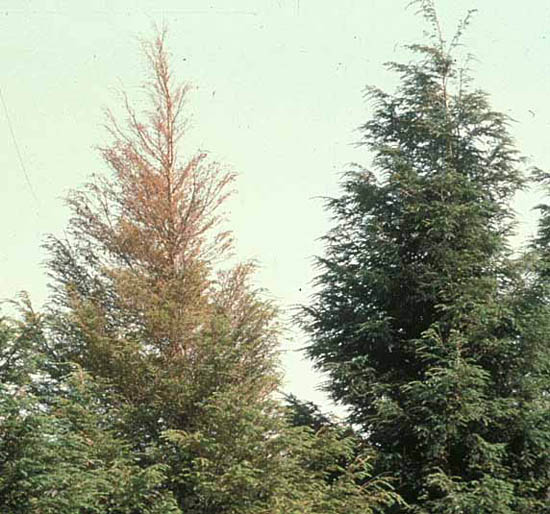Issue 10, June 28, 2013
Bagworm
Bagworms have hatched throughout the state and appear to be a little early than normal. Treatment is recommended in southern and central Illinois at this time as they have completed their ballooning and are settling down to feed in earnest. They will still be ballooning in northern Illinois, so treatment should be effective after the fourth of July.
Bagworm overwinters as eggs in the female bag. They hatch in late spring, exiting the bottom of the bag. The tiny caterpillars climb to the top of the tree where they each spin out a silk strand 1 to 3 feet long. This catches in the wind and carries the tiny larva wherever the wind blows. This is called ballooning. The bagworm population continues this process for about 2 weeks. They are most common on spruce, eastern red cedar, other junipers, arborvitae, white pine, crabapple, and pin oak but are found on many other species of trees and shrubs. They are more common on deciduous hosts in southern Illinois than farther north.

Bagworm Damage on Eastern Red Cedar
Bagworm larvae feed on the edges of broadleaf foliage, sometimes to the midvein. Leaves of needled evergreens are eaten back to the base until nothing remains. Defoliated needled evergreen branches or entire trees frequently die. Because bagworms start at the top of the tree and work their way downward, it is common to see the top third of evergreens dead due to defoliation. Deciduous trees will refoliate, with the damage being primarily aesthetic.
Bagworms spin individual silk tents and cover them with host foliage. The bagworms feed through the summer. As the caterpillars grow, they increase the size of the spindle-shaped bags up to 1-1/2 inches long. Pupation ranges from mid-August to very early September. As long as the caterpillar is feeding, it places bits of host foliage around the top of the bag. Once it has pupated or died, this practice stops and the top of the bags turn from green to brown. This is useful in scouting because pupated bagworms are not susceptible to insecticide sprays, and killed bagworms do not fall from the tree.
After mating with male bagworm moths, the female bagworms fill their bodies with fertilized eggs and die in the bag. Each female bag contains 300 to 1,000 eggs. Because bagworm eggs overwinter in the old bags, an effective control measure on shrubs and smaller trees is to handpick the bags from September into spring and destroy them.
Bacillus thuringiensis kurstaki (Dipel, Thuricide), spinosad (Conserve), cyfluthrin (Tempo), permethrin (Astro), and other pyrethroids are effective even on older larvae. Even so, they are more effective on younger larvae, so treatment soon after they stop ballooning is recommended. In addition, controlling younger larvae prevents the damage that would be caused by the larvae through the season.
Author:
Phil Nixon